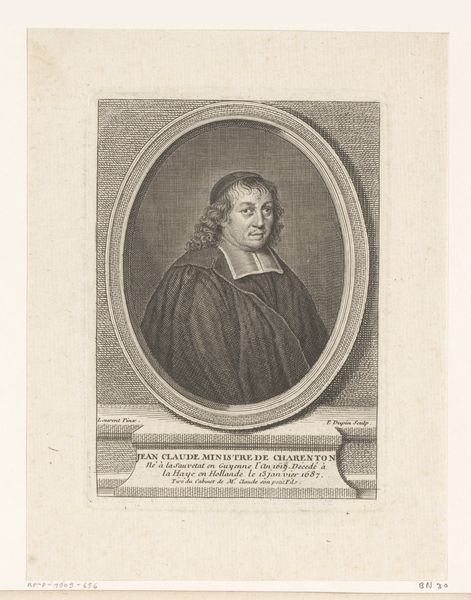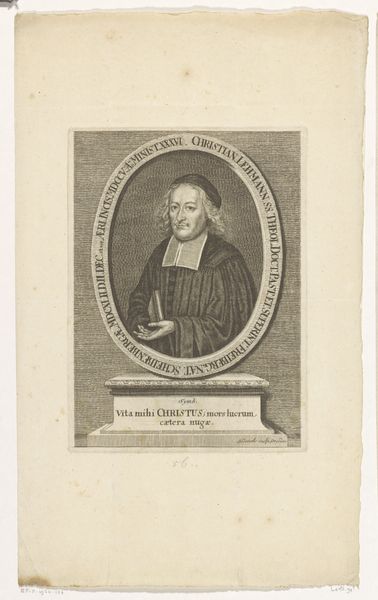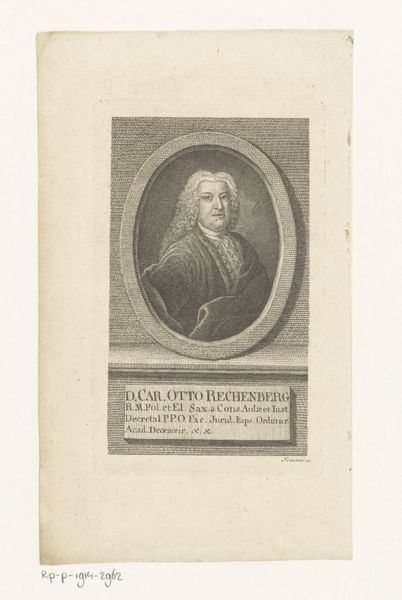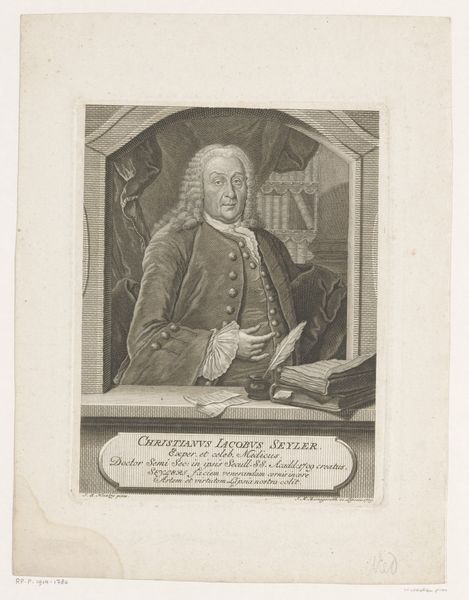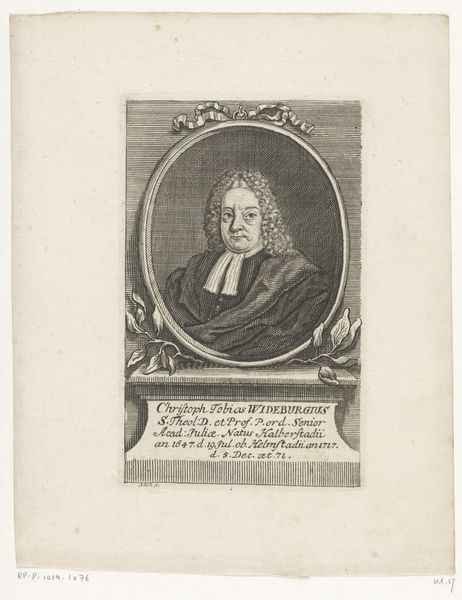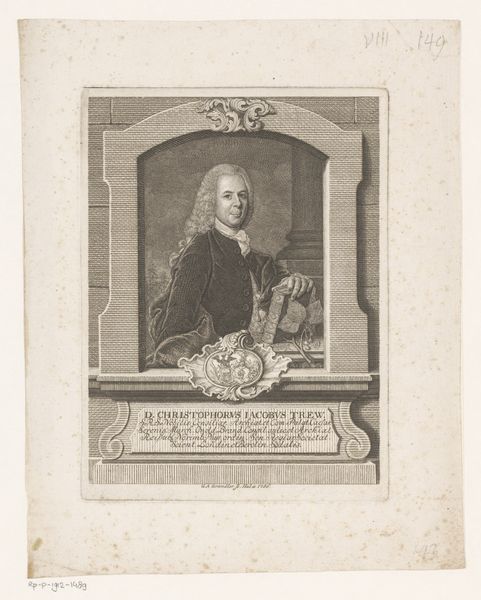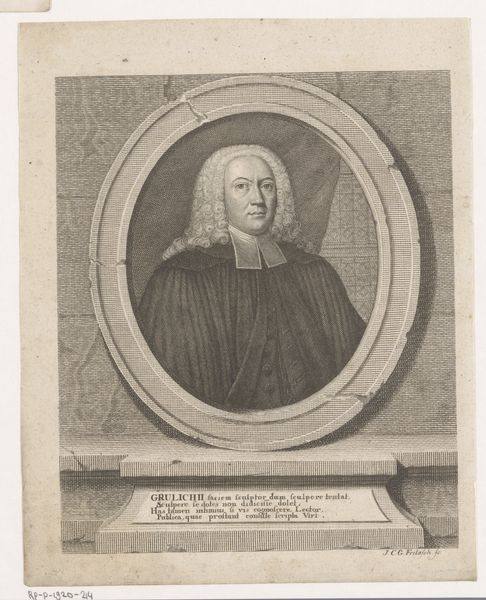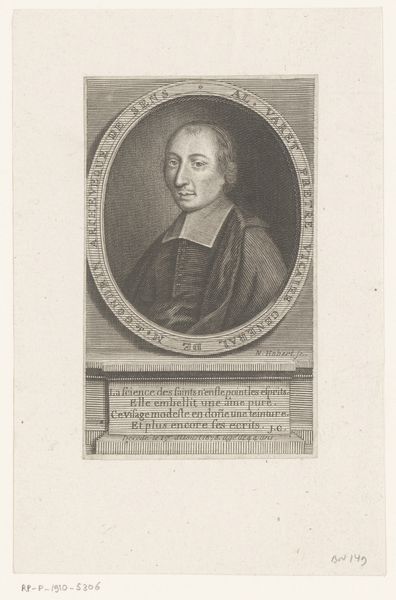
Dimensions: height 245 mm, width 193 mm
Copyright: Rijks Museum: Open Domain
Editor: This is a 1767 engraving, a print on metal, entitled "Portret van Christian Ehregott Raschig," by Otto Christian Saler. There's something so formal and considered about its composition... It definitely captures a certain period aesthetic. What catches your eye most in this portrait? Curator: Well, first, notice the oval frame, itself a symbolic form suggesting enclosure and perhaps containment of the subject within certain social or intellectual boundaries. Raschig holds a book, almost presented like a badge or symbol of his profession. The book indicates not just literacy but also links him to traditions of learning, authority, and sacred knowledge. Editor: That makes sense. He does have a very serious, almost severe expression. Is that typical for portraits of the time? Curator: It’s a performance, wouldn’t you say? The severe mien, the wig, even the tailored robe all work to construct a very particular image: that of a learned and respected clergyman. Consider also the inscription below. Do you think those words reinforce or perhaps even challenge the visual representation? Editor: I think they reinforce it. All that formality and reverence – it makes you think about the weight of tradition and expectation. Curator: Precisely! The inscription echoes that weight. Images, especially portraits, served not merely as likenesses, but as mnemonic devices, holding memories and social positions alive. Editor: I never thought about portraits as memory aids before! It adds a whole other layer. Thank you. Curator: It’s all about the layers – images constantly speak to us about who we were, who we are and, ultimately, who we aspire to be.
Comments
No comments
Be the first to comment and join the conversation on the ultimate creative platform.
